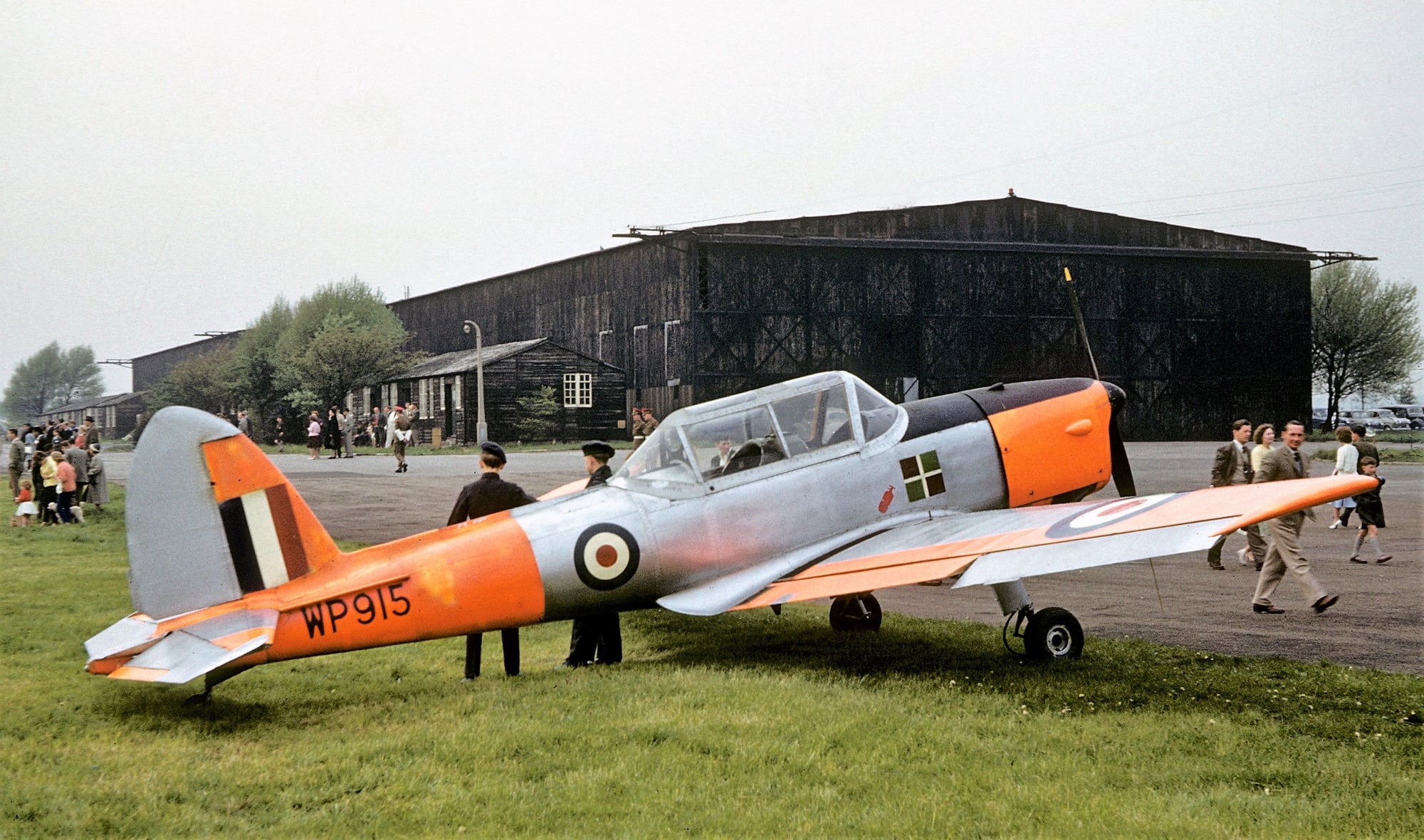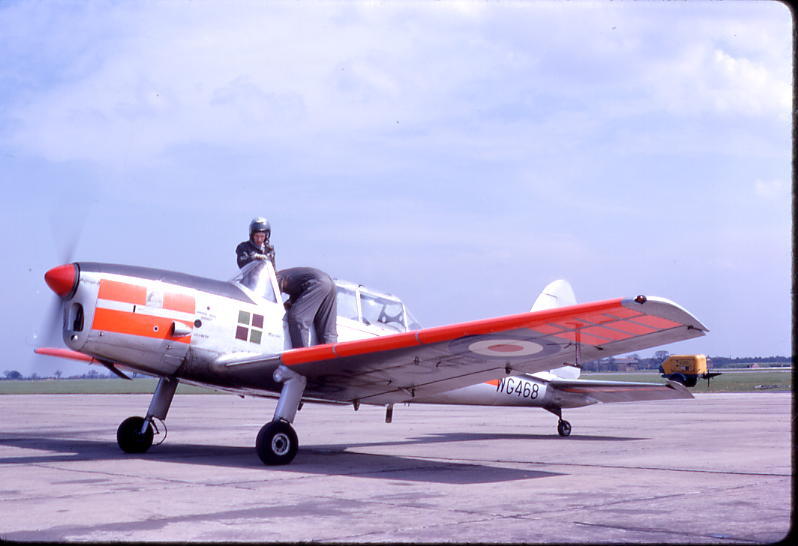Original chippy paint scheme
Thread Starter
Join Date: Oct 2011
Location: NJ USA
Posts: 28
Likes: 0
Received 0 Likes
on
0 Posts
Original chippy paint scheme
Hello everyone,
This will be my first post on this forum but have perused for quite some time.
A quick question for people in the know. I am an expat living in the USA and may have an opportunity to purchase an ex RAF UAS Dehavilland DHC1 Chipmunk.
I’m thinking of returning it to its original paint, my question is about the orange markings on the 60s era chippies, paint or vinyl wrap? Easy to replicate or purchase?
Thank you
Dave
This will be my first post on this forum but have perused for quite some time.
A quick question for people in the know. I am an expat living in the USA and may have an opportunity to purchase an ex RAF UAS Dehavilland DHC1 Chipmunk.
I’m thinking of returning it to its original paint, my question is about the orange markings on the 60s era chippies, paint or vinyl wrap? Easy to replicate or purchase?
Thank you
Dave
Join Date: Feb 2006
Location: Hanging off the end of a thread
Posts: 32,819
Received 2,795 Likes
on
1,190 Posts
Dave I do have a pdf file of the RAF painters and finishers manual that includes the chippie, some was dayglo tape if I remember correctly some paint, I will try to find the manual and upload it for you, in the mean time.
You have no doubt already found the wonderful thread started by the much missed Coffmanstarter entitled “RAF Chipmunks” in the military section .....but just in case?
It is not about the painting process itself but is full of info and photos of markings throughout its service.
Early ones had yellow bands, IIRC? Unless it served at RAFC Cranwell, then it could have those rather nice blue ones...
The 'dopey painters manual' would be great to see.
The 'dopey painters manual' would be great to see.
Thread Starter
Join Date: Oct 2011
Location: NJ USA
Posts: 28
Likes: 0
Received 0 Likes
on
0 Posts
Yep, Davef68 second pic! mikemmb I have seen all the lovely pics in the "RAF chipmunks" thread. After a little research it was flown at RAF Hamble at University Air Squadron Southampton WP829 before being sold to the Kenyan Air Force in the 70s
It was basically silver with the orange dayglow stipes.
I have also seen this with a subtle light grey and the orange, which I think might look a little better, not sure though. I mean I like it, just think there are better paint jobs. But in the interest of originality...
I'll have to give this some thought.
Thanks for all the responses everyone
It was basically silver with the orange dayglow stipes.
I have also seen this with a subtle light grey and the orange, which I think might look a little better, not sure though. I mean I like it, just think there are better paint jobs. But in the interest of originality...
I'll have to give this some thought.
Thanks for all the responses everyone
On the 8th January 1965 I picked up WP850 and flew it from Marham to Honington to be the basis of flying currency for 90 Sqn's Valiant co-pilots, the Valiant having been grounded rather suddenly.
This was finished in Grey/Green day camouflage finish owing to its previous role, before being stored at Kemble, as a reconnaissance aircraft during the Cyprus troubles.
After three months giving air experience to the squadron ground crew I left the squadron but I know this aircraft is still active , albeit in a different colour scheme, with a different cockpit hood, in the United States.
This was finished in Grey/Green day camouflage finish owing to its previous role, before being stored at Kemble, as a reconnaissance aircraft during the Cyprus troubles.
After three months giving air experience to the squadron ground crew I left the squadron but I know this aircraft is still active , albeit in a different colour scheme, with a different cockpit hood, in the United States.
RAF MAnston 1 AEF
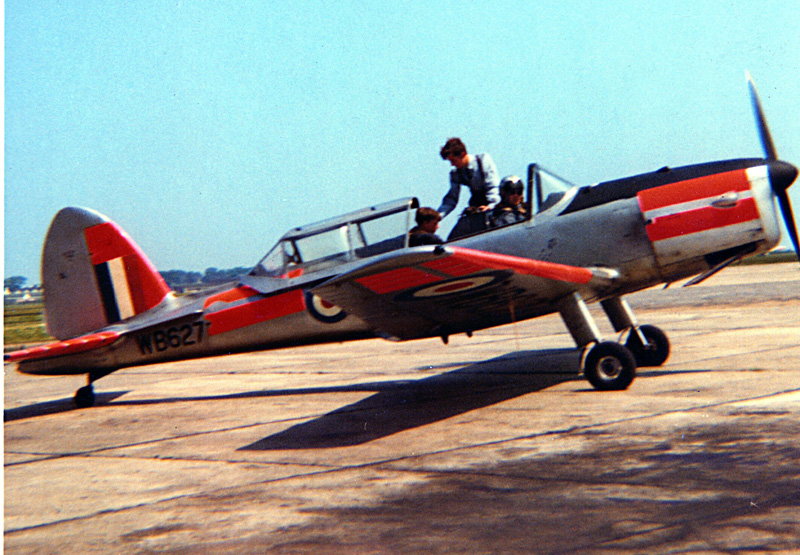
1968 WB627 silver airframe and thick sticky black plastic dayglow. There were rolls of it on the flight for minor
repairs and silhouettes of Chipmunks etc, for staffers cars.
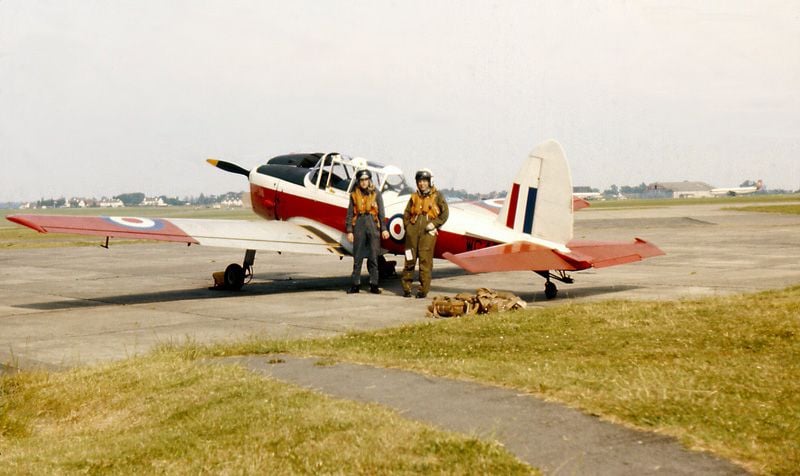
21st June 1975 WG458. The colour scheme had changed to red, white and grey; the flying suits had changed from
blue to green and the bone domes had changed from silver (Mk 1c?) to white (Mk 2A).
Between the two schemes, the silver and dayglow changed to grey and dayglow stipes. I believe that originally as
delivered from the factory, they were silver airframes with yellow bands around the fuselage as noted above.
And a link to a 1958 article in Flight on the formation of 1 AEF at Biggin Hill. Unfortunately, the photos are black and white, but silver and yellow was the standard colour scheme for RAF trainers at the time.
https://www.flightglobal.com/pdfarchive/view/1958/1958-1-%20-%200834.html
Rolls of dayglow sticky back plastic were IIRC, about 2ft wide and several yards long; you cut to size/shape, peeled off a backing sheet and applied it to the airframe/car/bone dome etc.
https://www.flightglobal.com/pdfarchive/view/1958/1958-1-%20-%200834.html
Rolls of dayglow sticky back plastic were IIRC, about 2ft wide and several yards long; you cut to size/shape, peeled off a backing sheet and applied it to the airframe/car/bone dome etc.
Dave,
I appreciate your desire for an original paint scheme and I realise its all a matter of personal opinion but its worth researching the history of the aircraft if you do get it. You may well find that some of its life was spent in a more attractive paint scheme!
I appreciate your desire for an original paint scheme and I realise its all a matter of personal opinion but its worth researching the history of the aircraft if you do get it. You may well find that some of its life was spent in a more attractive paint scheme!
Unless it served at RAFC Cranwell, then it could have those rather nice blue ones...
A quick summary of RAF Chipmunk colour schemes:
1. The introduction scheme - overall cellulose High Speed Silver with yellow bands (except as mentioned above).
2. 1958/59, yellow bands removed in favour of painted Day Glo panels (various patterns, but the layout shown in Post #7 the definitive one).
3. 1961 (ish), due to paint instability issues, the painted panels replaced by the 3M adhesive strips. There are three possible configurations of the strips on the rear fuselage: (a) 2 parallel strips with the lower strip more or less centred on the top of the roundel (post #11), (b) and additional third lower strip and (c) two strips, centred on the roundel and tapering aft. Cowl side strips appeared in two variations also, either (a) rectangular or (b) with rounded leading edges. It seems that the second nose strip configuration only ever appeared with the third rear fuselage layout.
4. 1966, the MoD introduce polyurethane paints with Light Aircraft Grey replacing Silver (they're tonally very similar; a deliberate choice). The earliest application for a Chipmunk that I can find is c.1969.
5. 1970 the new colours of Red/White & LAG appear, initially on aircraft of 2 FTS (indeed, by the time of its closure in 1974, all of its Chipmunks were in this scheme) . This is not the scheme shown in Post #11; it comprised red lower fuselage, wingtips, wind leading edges, wingroots and tailplane - all fabric horizontal surfaces were in LAG.
6. 1971 a second scheme using the same colours promulgated, this is the more familiar one with red outer wing panels, red elevators and LAG wingroots. What was wrong with the first permutation I wonder? The first examples of this scheme appeared around 1974/75, and a few aircraft subsequently could be seen in a hybrid scheme, i.e. the "new" wing and elevator treatment but retaining the red wingroots. The last example of this I can find was in 1978.
A few more things to think about - the advertised "life" of the polyurethane paints was 7 years, the cellulose paint obviously less, given the low utilization rate of the RAF's Chipmunk fleet some aircraft would have "skipped" one or even two of the schemes, so around the mid 1970's it would have been possible to see Chipmunks in all four of the schemes (silver, grey and the 2 R/W/LAG schemes). Adding a further complication, in B&W photos it can be hard to tell if it's silver or grey (remember what I said about tonal similarities?).
It's a surprisingly complex subject...
Last edited by Dora-9; 1st Nov 2019 at 21:12.
Join Date: Dec 2018
Location: Dundee
Posts: 2
Likes: 0
Received 0 Likes
on
0 Posts
[QUOTE=Davef68;10607651]If it's solid, it's paint; if it's strips it's tape
Paint Pic from the net)
Davef68..
In the top picture, one does appreciate the two air cadets guarding "their" aircraft, the redcap with his white sleeves and the two other red caps [one a witness 'natch] watching him !!
{sorry I can't show your image, one is on "restrictions" at the moment. }
}
Paint Pic from the net)
Davef68..
In the top picture, one does appreciate the two air cadets guarding "their" aircraft, the redcap with his white sleeves and the two other red caps [one a witness 'natch] watching him !!
{sorry I can't show your image, one is on "restrictions" at the moment.
 }
}
As Dora-9 mentioned in #14
Here's two of my photos taken at 5FTS (RAF Thornhill) S. Rhodesia in 1951. The yellow band was on the fuselage from the front of the tail fin forward for about two feet.
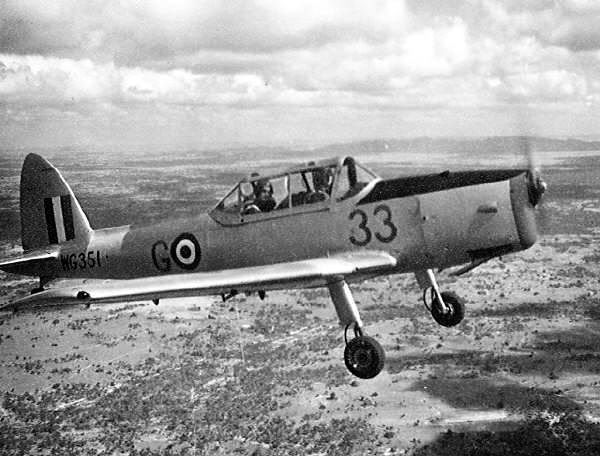
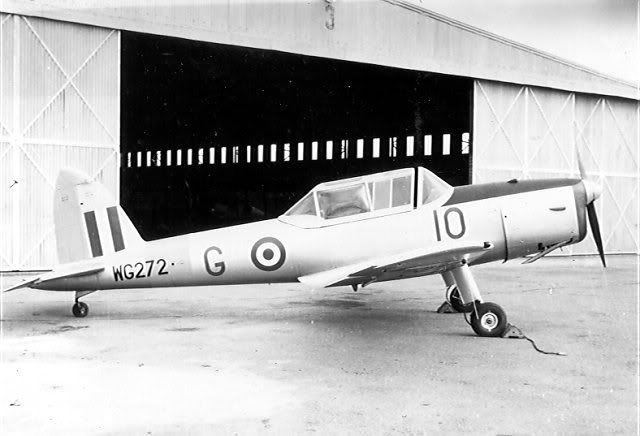
1. The introduction scheme - overall cellulose High Speed Silver with yellow bands (except as mentioned above).


Both of these Chipmunks were with 5 FTS at Thornhill, I believe the red nose cowl was exclusive to that unit. WG351 became VH-SJD, the prototype SA29 "Spraymaster" - it survived exactly one day on the Australian Register before being written off!
I'm not very good at posting pictures, but here are a few to mull over.
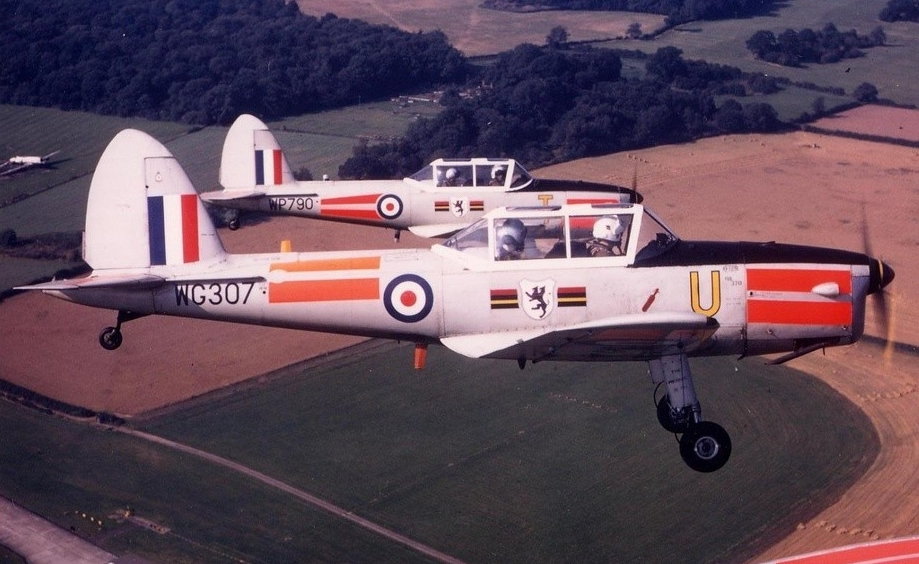
Chipmunks of Edinburgh UAS, c.1973 Note the two different styles of applying the fuselage DayGlo strips. Both aircraft sport white canopy frames, a feature which was not that uncommon.
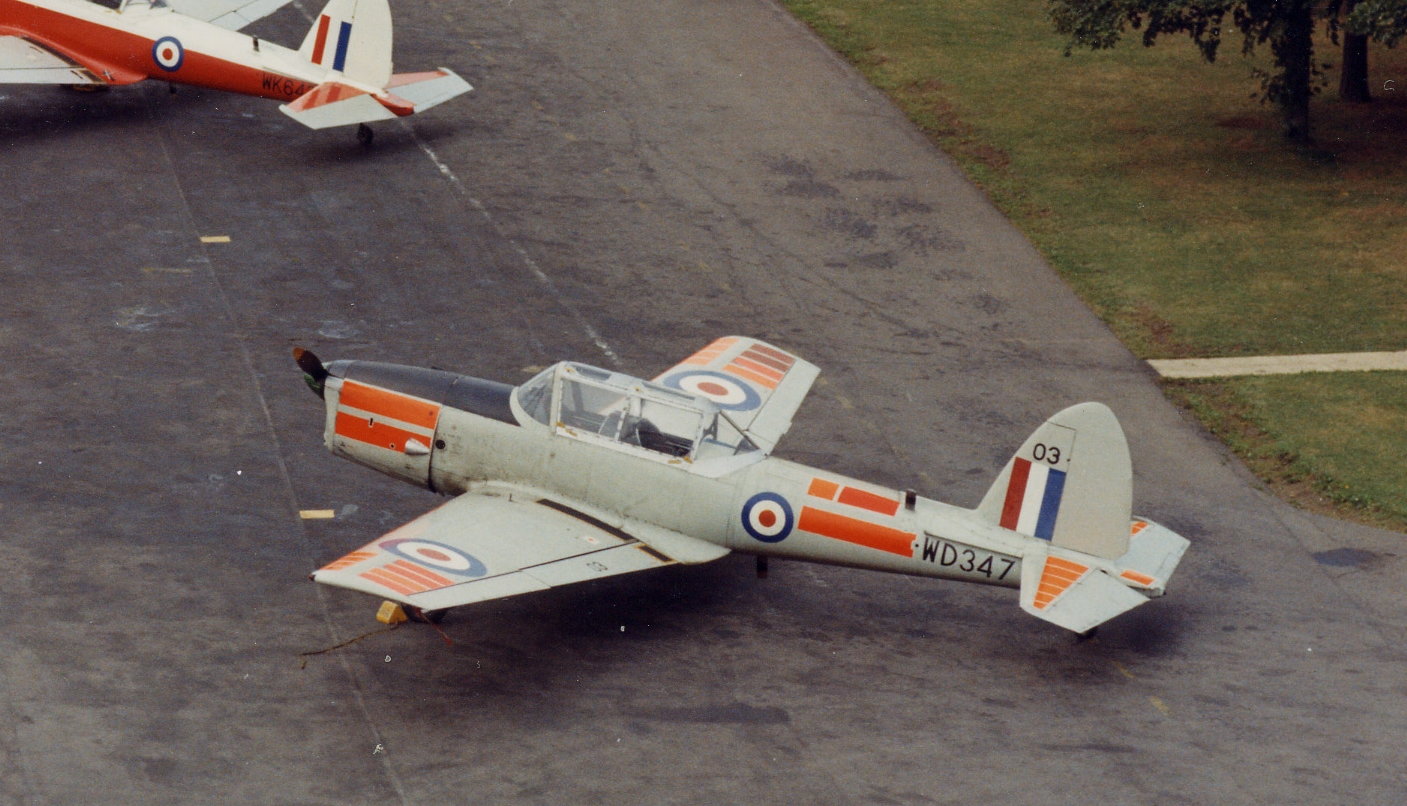
WD347 of CFS, c.1974. Overall grey but possibly with a white canopy again, but note the variation in the strip colours on the wings.
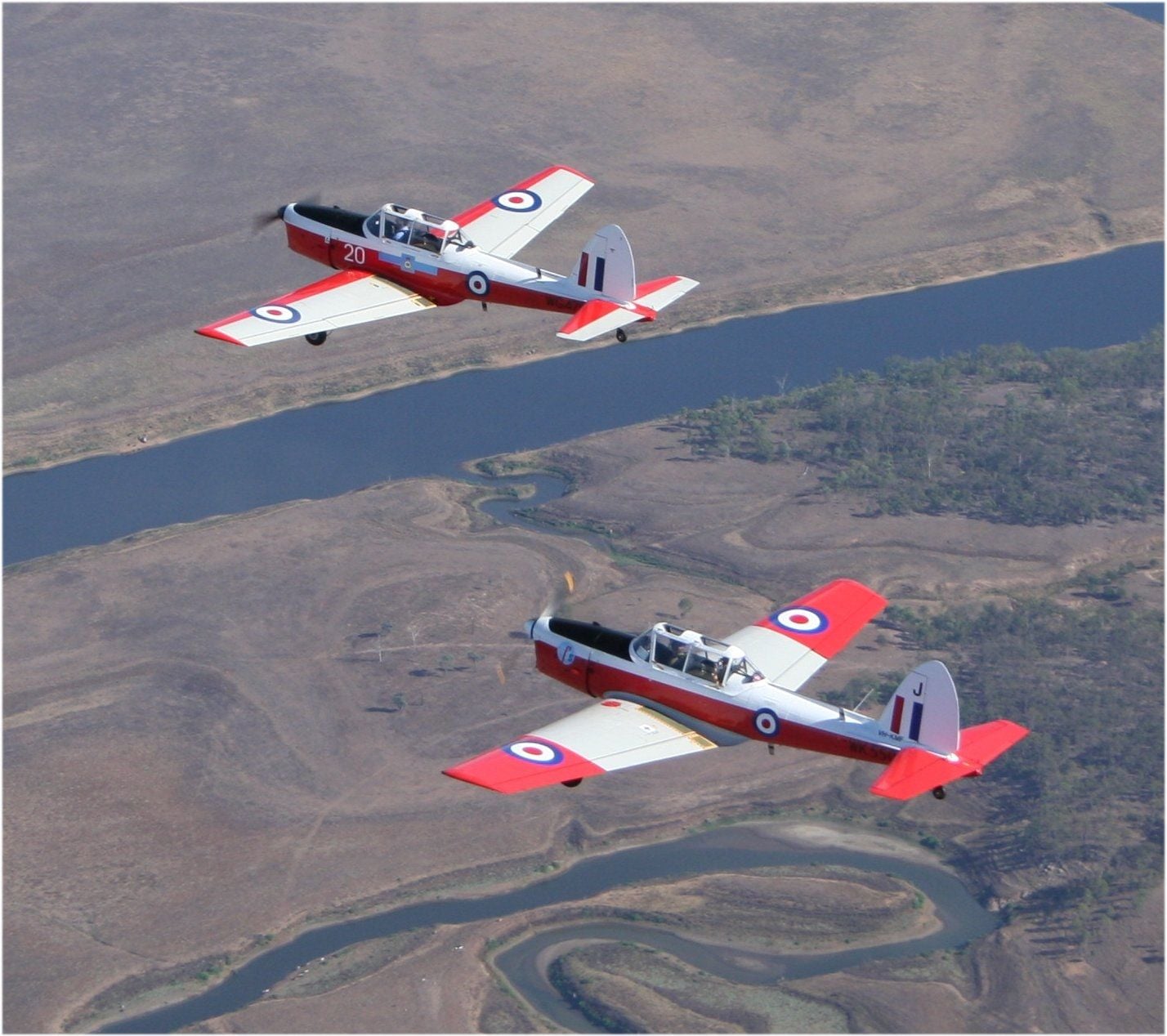
Probably the best comparison photo I can find of the two R/W/LAG schemes. Both are restorations, but very accurate. I would say that I kinow, as I was involved with both, but I went to great pains to get them correct....

Chipmunks of Edinburgh UAS, c.1973 Note the two different styles of applying the fuselage DayGlo strips. Both aircraft sport white canopy frames, a feature which was not that uncommon.

WD347 of CFS, c.1974. Overall grey but possibly with a white canopy again, but note the variation in the strip colours on the wings.

Probably the best comparison photo I can find of the two R/W/LAG schemes. Both are restorations, but very accurate. I would say that I kinow, as I was involved with both, but I went to great pains to get them correct....
4. 1966, the MoD introduce polyurethane paints with Light Aircraft Grey replacing Silver (they're tonally very similar; a deliberate choice). The earliest application for a Chipmunk that I can find is c.1969.
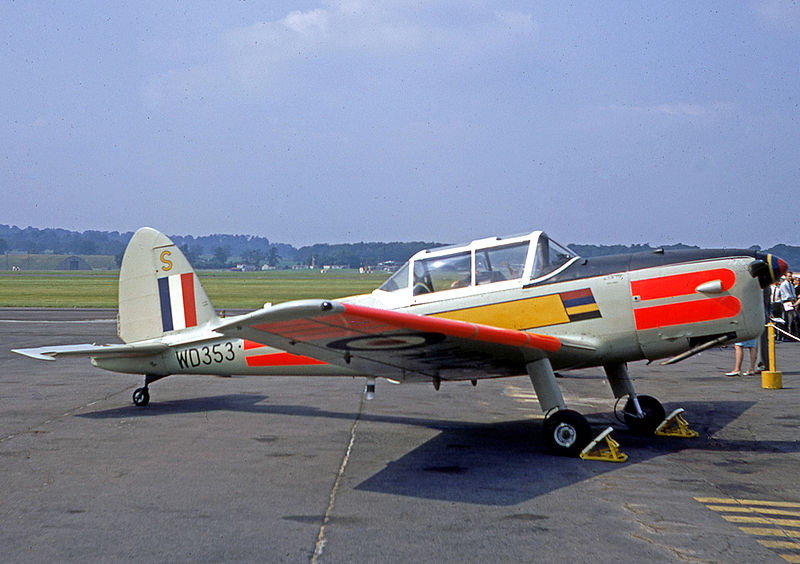
Given the date, I'm fairly sure the UBAS Chipmunks were repainted in the grey-with-white canopy scheme during the summer of 1967. The UHF mod was fitted at the same time. A definite SA downgrade since almost all the other movements at Shawbury were using VHF - Marshall's Vampires and Piston Provosts.
Chipmunks of Edinburgh UAS, c.1973
 , but those are UBAS Chipmunks, although neither of them was on the fleet in my time.
, but those are UBAS Chipmunks, although neither of them was on the fleet in my time.




